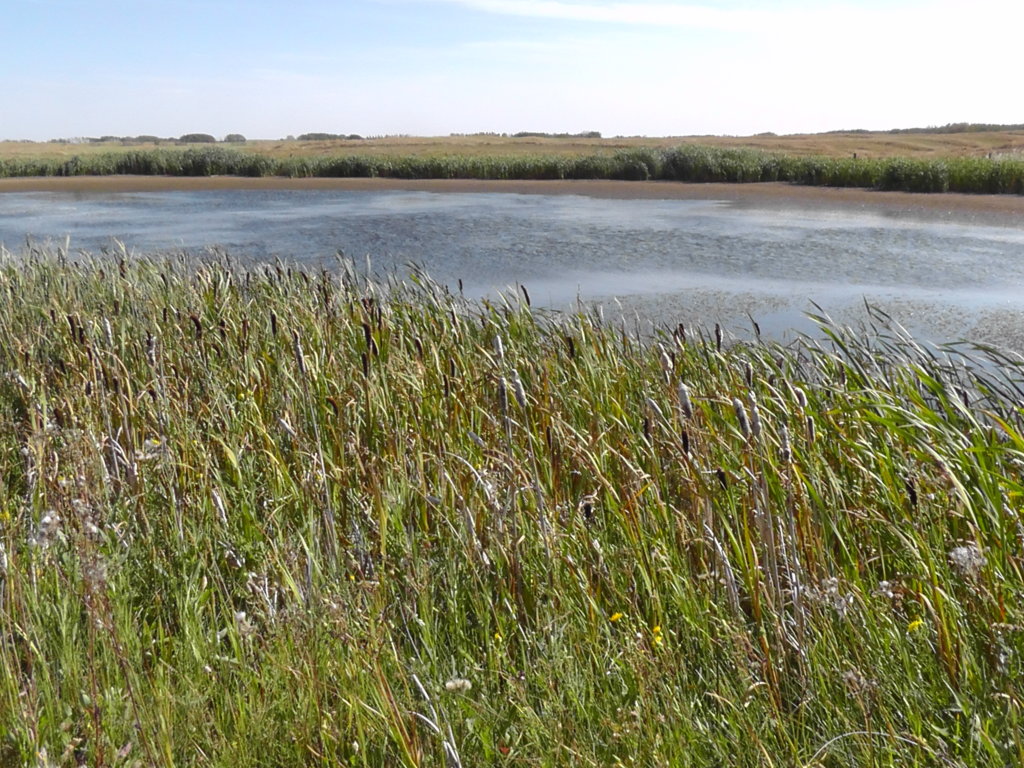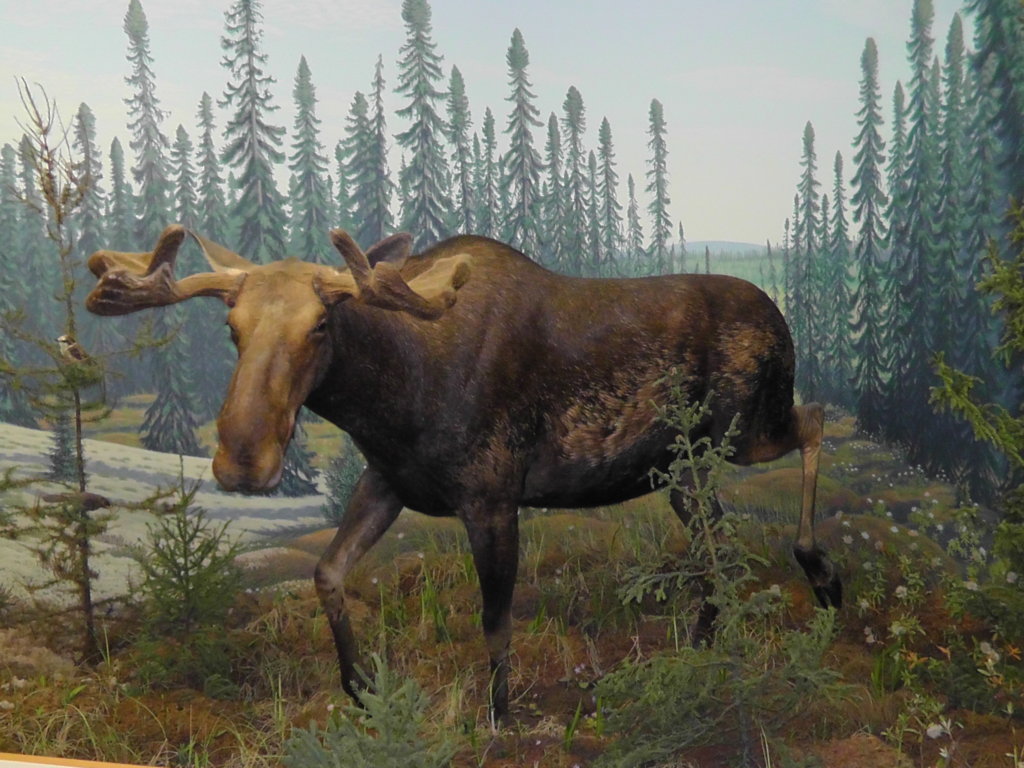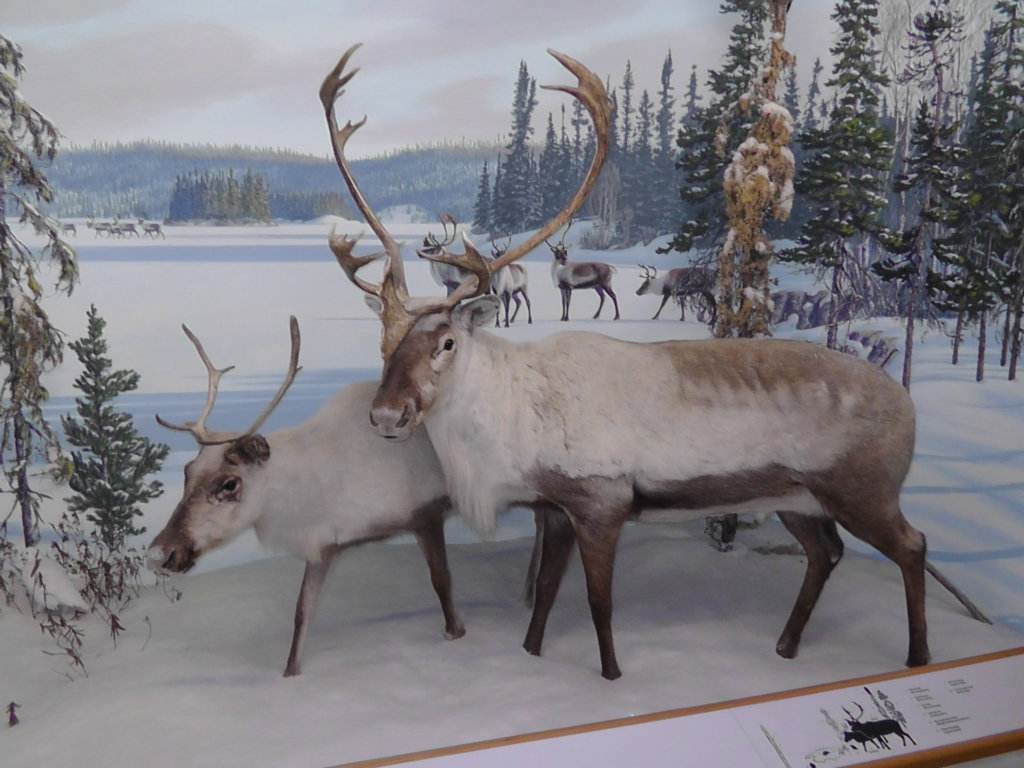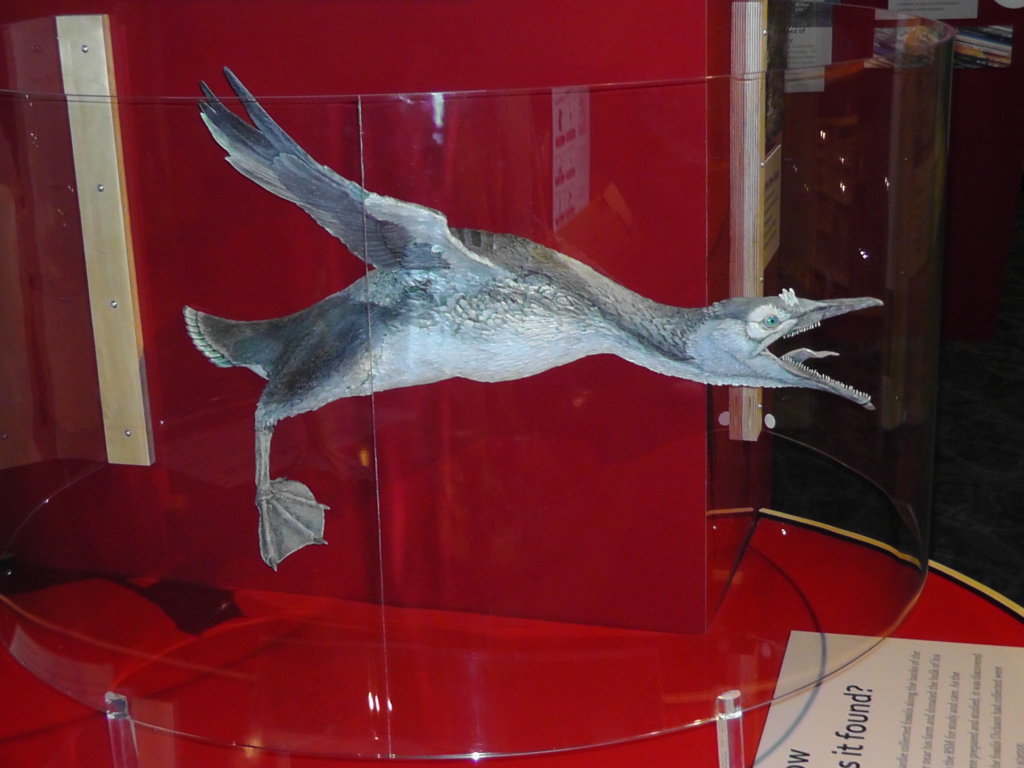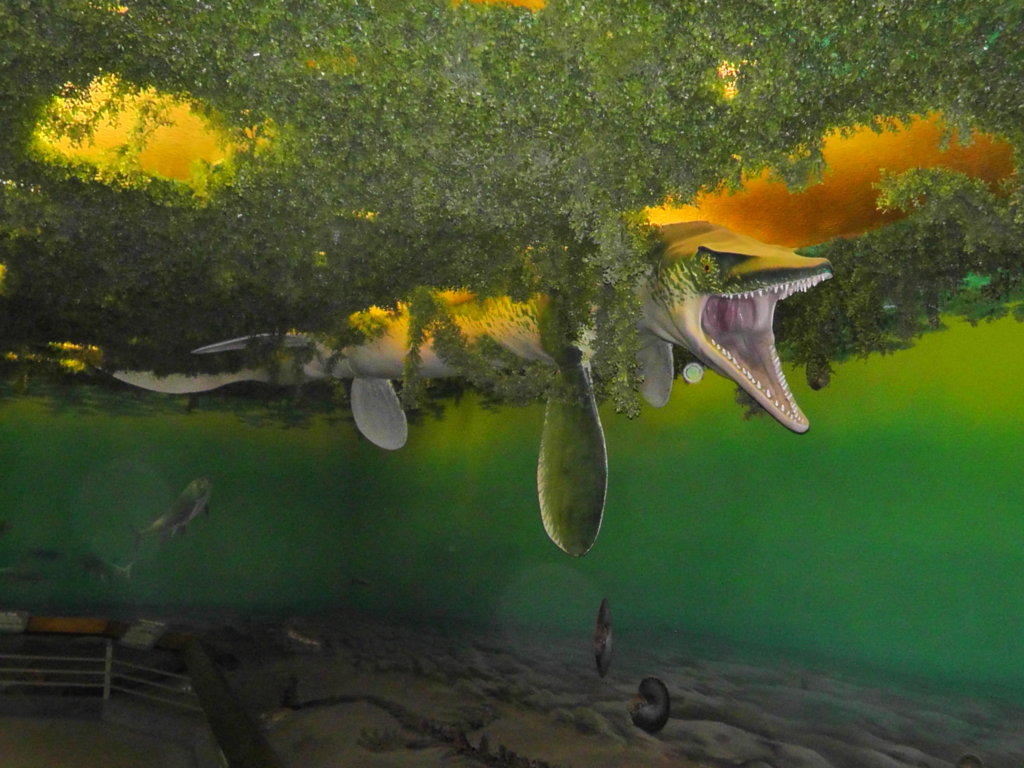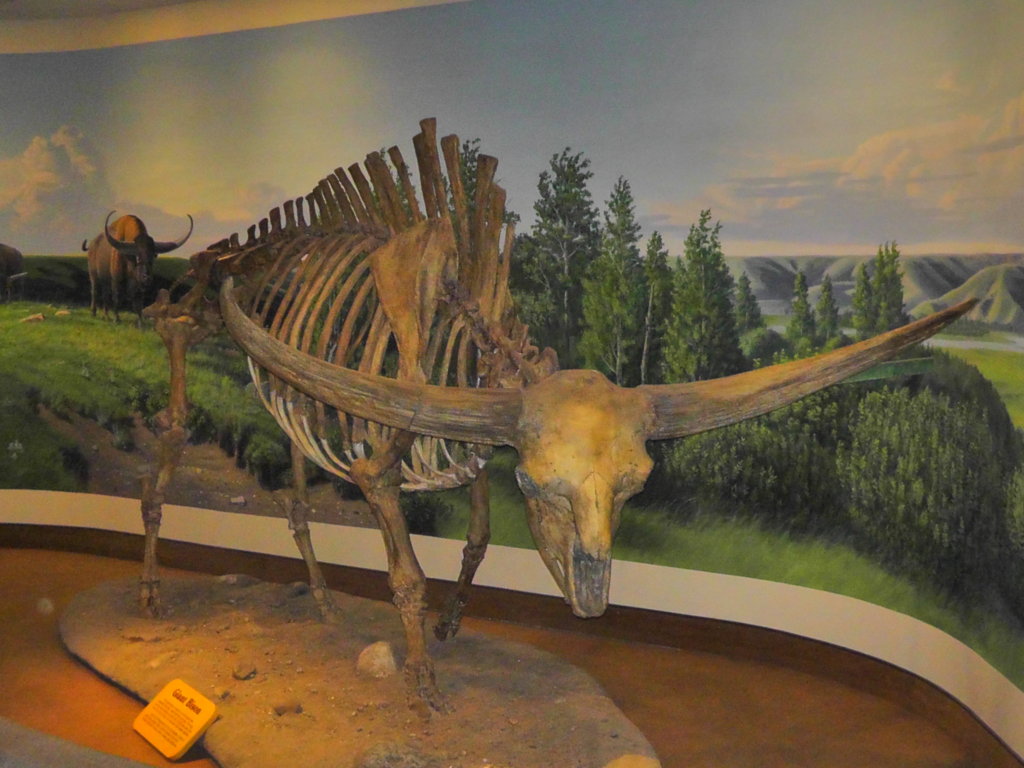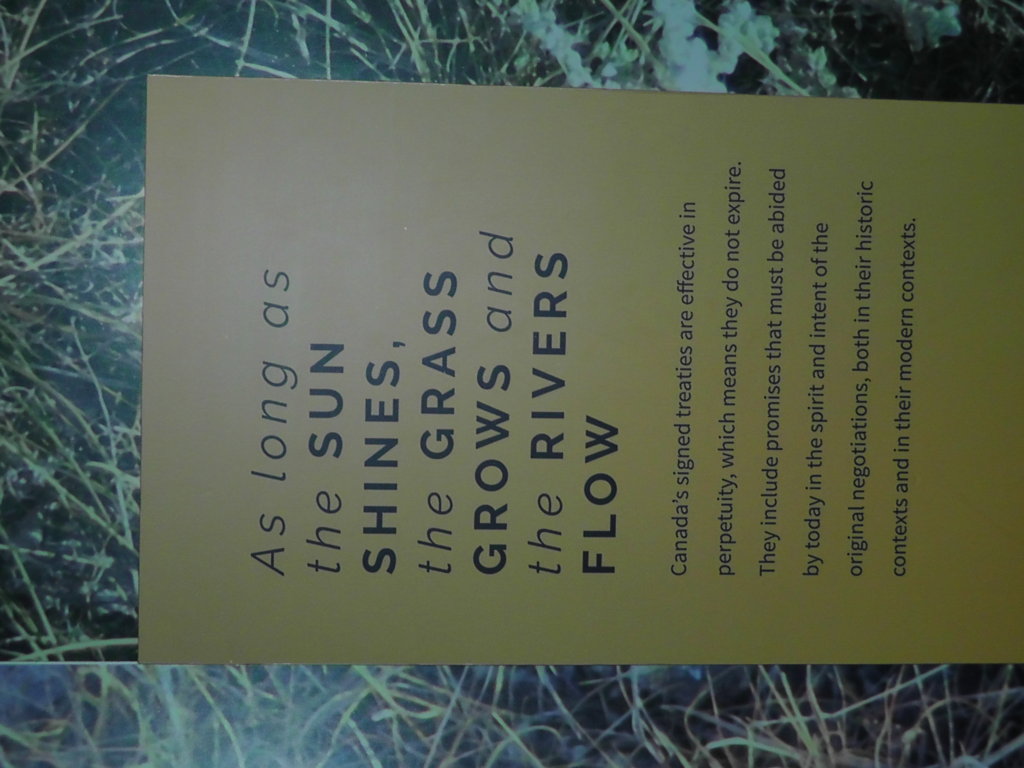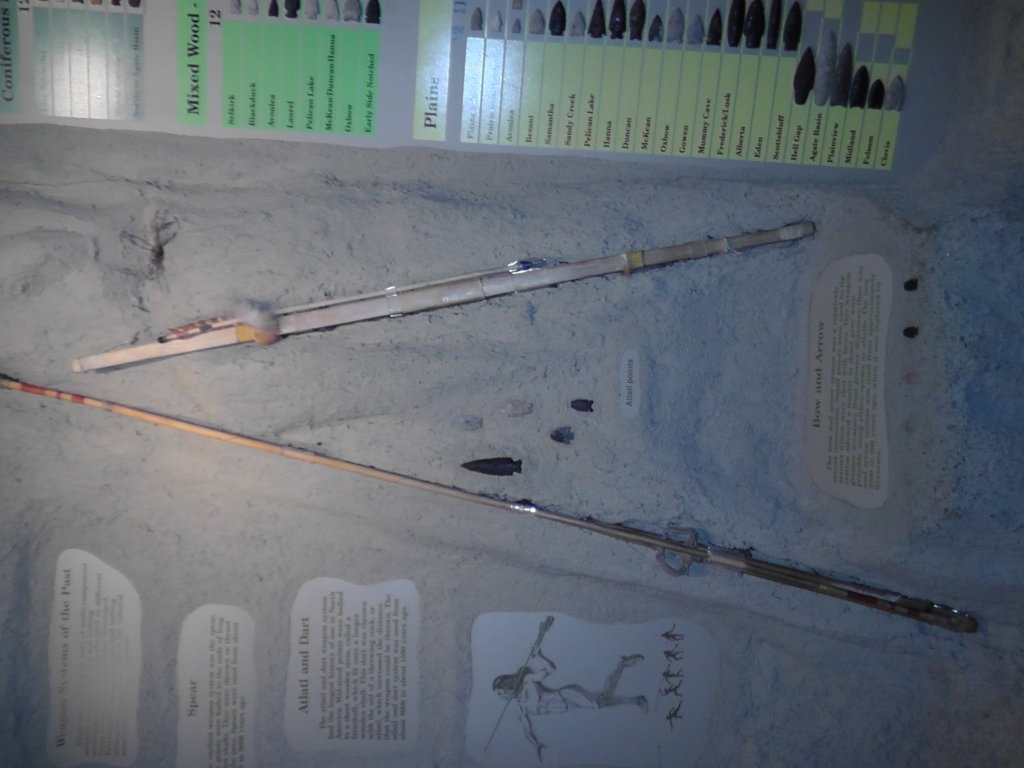Saskatchewan
Driving across Saskatchewan, I noticed many small ponds and lakes among the gently rolling hills. Thousands of these prairie potholes were created when the continental glaciers retreated and ice that had been buried by glacial deposits melted, leaving depressions. Close to 70% of the continent’s waterfowl migrate through Saskatchewan so these bodies of water are extremely important to them.
The Royal Saskatchewan Museum showcases the natural, geologic, and First Nations history of Saskatchewan. These are but a few examples of extinct animals (Mosasaur, Cretaceous bird (note the teeth), and giant bison) and living animals (moose and caribou).
The Native Americans here have taken advantage of new discoveries when they became available but many are relatively new. The bow and arrow came in use only in the last 2,000 years; before that they used the spear thrower (atlatl). Pottery was introduced only 1800 years ago and the horse did not make it up here until around 1750 AD.
Change became even more rapid when the white men came. Treaties were made and broken as in the U.S. In my opinion, both countries need to do more to uphold the rights of Native Americans, but Canada may be better than the U.S.A. in this regard.
